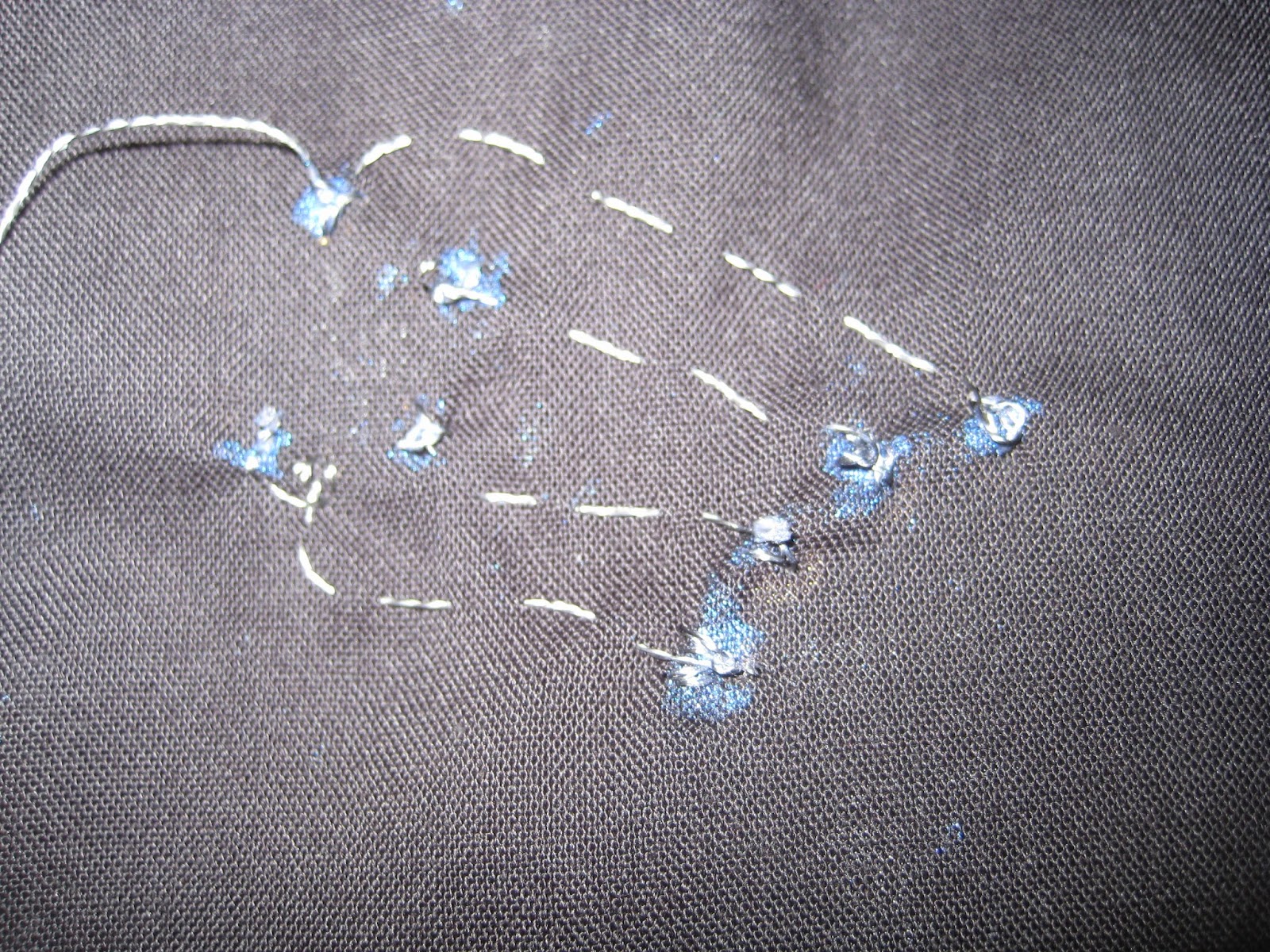I gave this as a very short talk at the recent BCS Mid-Wales Show and Tell. So I'm describing it here in case it's of use to others. The presentation was mostly a collection of rather large photos but it can be downloaded at http://figshare.com/articles/Sewable_Wearable_Computing/1056536. I was inspired to give it a go by Charlotte Godley (@charwarz on Twitter) who ran a wearables workshop for Girl Guides using Adafruit Gemmas. These are small Arduino chips on a mounted on a base, made by a company called Adafruit. The base has holes so that you can sew it onto items of clothing. Slide 2 shows a Gemma attached by crocodile clips to an LED, a light that can be programmed to flash in any colour. The Gemmas are very cheap, only £6.50 so you can safely play with electronics without spending too much if you break it.
Steel thread can be used to sew your Gemma to its LEDs. This conducts and so replaces the crocodile clips (or soldering bits of metal) when you want to make wearable electronics. It's not that easy to sew. It doesn't bend and tie as easily as thread does, and can come undone, and make short circuits when it crosses other bits of thread. Also, the longer the thread, the higher the resistance.
After the Gemma, I got a Flora, it's bigger sister. This costs approx £20, and has more available connections. I wanted to attach an accelerometer and lights, and have the lights flash different colours in order to demonstrate the x, y or z direction of movement. The presentation shows how I put it together and how much it cost. You can see how it was stitched, how I used nail varnish to stop the knots in the ends of the steel thread from unravelling, and how it gets programmed using the Arduino environment.
The Adafruit site has a lot of useful explanations and videos about the Gemma and the Flora. You can buy the equipment from many sites (I used Phenoptix and 4tronix, both were good).
Overall, it was fiddly, but a lot of fun. Computing projects that have an element of real hardware, poor connections, and many parts, each of which could be wrong, are always harder to debug than software. I've never really played with electronics before, and I ended up learning a lot even in this simple project, about power, resistance and circuits. And I now have a thing with flashing lights that I can wear on my leg while dancing the Charleston.




No comments:
Post a Comment